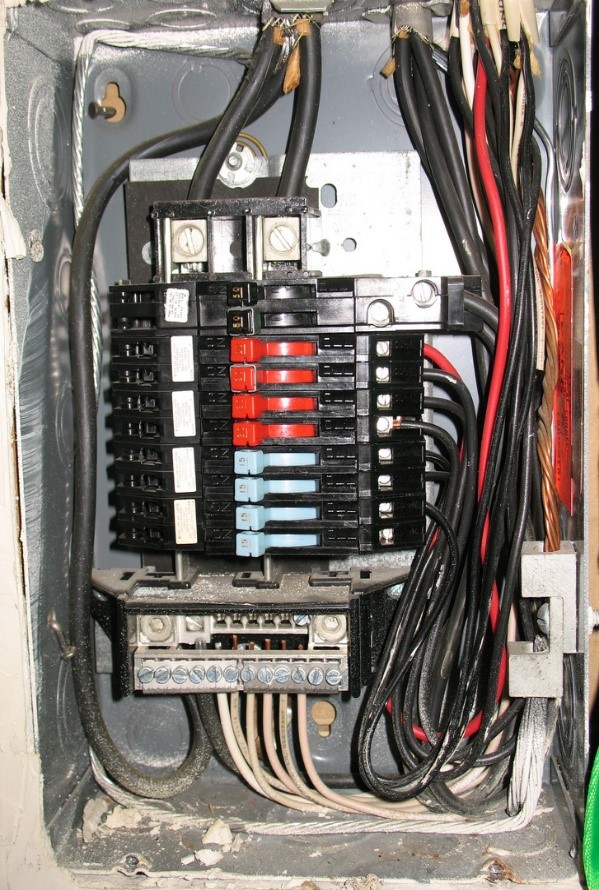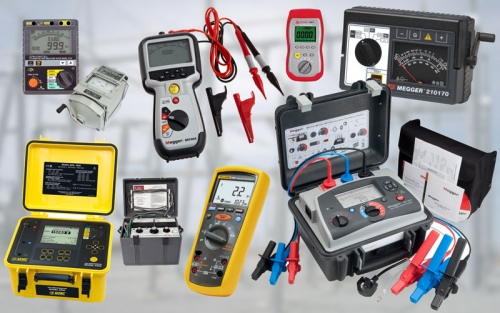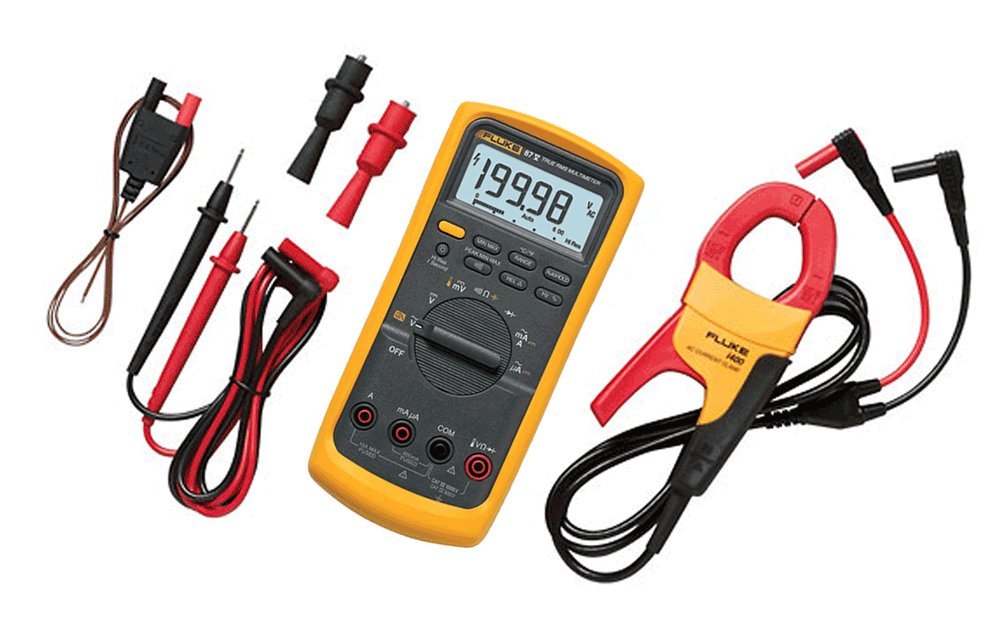A GUIDE TO TROUBLESHOOTING CIRCUIT BREAKERS
An electric circuit breaker is an important part of any electrical wiring system. It is designed to interrupt the flow of electricity the moment a fault, such as an overload or short circuit, occurs. Circuit breakers are made in a variety of sizes, depending on the area they cover. As a homeowner, it is important to know about some common electric circuit breaker problems and their solutions.
CIRCUIT OVERLOAD
A circuit can become overloaded when more current (amps) runs through the circuit than it was designed to handle safely. Overloads can be caused by operating too many devices on one circuit, a malfunctioning appliance or by loose or corroded wires or connections.
Circuit breakers come in different amperage ratings that determine how much current can safely flow through the circuit. If a 15 Amp circuit breaker is protecting a series of receptacles with various devices plugged in, like a hair dryer, computer and television, the circuit breaker will trip if the current exceeds 15 Amps. This prevents overheating, which can cause a fire. In the case of a breaker trip where overload is suspected, unplug all the items on the circuit before resetting the breaker. After it is reset, turn on the devices, one at a time, to determine what may have caused the overload. If a circuit overload happens on a regular basis, a new dedicated circuit may need to be installed to handle the amperage load.

The Basics of Electrical Testing
Electrical testing in its most basic form is the act of applying a voltage or current to a circuit and comparing the measured value to an expected result. Electrical test equipment verifies the math behind a circuit and each piece of test equipment is designed for a specific application.
It is the job of a test technician to know which piece of test equipment to use for the task at hand and also understand the limitations of the test equipment they are using. In this article, we take a look at the most common pieces of test equipment used in the field.
Multimeter
Also known as a VOM (Volt-Ohm meter), a multi-meter is a handheld device that combines several measurement functions (such as voltage, current, resistance and frequency) into a single unit.
Multi-meters are mainly used to troubleshoot electrical problems in a wide array of industrial and household devices such as electronic equipment, motor controls, domestic appliances, power supplies, and wiring systems.
Digital multi-meters are the most common form of meter used today; however analog multi-meters are still preferable in some cases, like when monitoring a rapidly changing value or sensitive measurements, like testing for CT polarity.
Megohmmeter
Most commonly referred to as simply a “megger”, a megohmmeter is a special type of ohmmeter used to measure the electrical resistance of insulators.
Resistances values by megohmmeters may range from several megohms to several million megohms (teraohms). Megohmmeters produce high voltages via battery powered internal circuitry or a manually operated generator with outputs ranging from 250 to 15,000 volts.
Megohmmeters are one of the most frequently used pieces of test equipment and can be used to measure the insulation of various types of apparatus such as circuit breakers, transformers, switchgear and cables.
Low-Resistance Ohmmeter
Often called a DLRO in the field, the low-resistance ohmmeter is used for making high-precision resistance measurements below 1 ohm. Low-Resistance ohmmeters produce low voltage DC currents via battery power with outputs of up to 100A.
Resistance measurements are achieved with four terminals, called Kelvin contacts. Two terminals carry the current from the meter (C1, C2), while the other two allow the meter to measure the voltage across the resistor (P1, P2). With this type of meter, any voltage drop due to the resistance of the first pair of leads and their contact resistances is ignored by the meter.

The parts of your breaker box
1. Circuit breakers
Each circuit in your home has a corresponding breaker. If there’s an electric overload on a circuit (whether from a short circuit or too many appliances running at once), the corresponding breaker automatically trips to shut off the flow of electricity to that circuit.
There are 2 main types of standard breakers:
Single pole – These are single switches and likely make up most of the breakers in your breaker box. In the photo above, all the circuit breakers on the left side, except the service disconnect, are single pole. They can handle 120 volts and are either 15 amps or 20 amps. (See the numbers on top of the switches?)
Double pole – These look like two switches joined together. They can handle 240 volts and are usually between 15-125 amps. These are for your large appliances like stoves, dryers, air conditioners and water heaters.
There are also other types of special purpose breakers such as Arc Fault Circuit Interrupters (AFCI) and Ground Fault Circuit Interrupters (GFCI) that are designed to provide additional safety protection from fire (AFCI) and electrocution (GFCI). These are not in the picture above.
2. Service disconnect
You can, in the case of an emergency, shut off the electricity to your entire home by flipping the service disconnect.
It’s the biggest breaker in your box, usually 100 to 200 amps. It’s sometimes also called the ‘electrical main’. Most often it’s at the top or bottom of your box, though it can also be in the middle, as in this example.
This is where the power from the electric company flows into the box. It goes through this switch and into the rest of the circuits.
3. Expansion slots
Many breaker boxes have empty slots so that you can have a licensed electrician add additional circuits, as needed. This comes in handy if you add new appliances to your home or need to add electricity to a room that doesn’t have it (like a garage, basement, or room addition).

Is it OK to turn off the main breaker?
Yes, it is OK to turn off electricity at the main breaker without harming any other breakers or electrical components, however, keep in mind that abruptly shutting off the main breaker will kill power to all electrical components in the house like HVAC and computers, that may require resetting or rebooting once you turn the power back on. Also, keep in mind that you will have no lights, possibly no hot water, and it could impact your safety working around your home. If you are unsure how to kill power to a circuit for repairs or maintenance, you can kill the main power to work safely while you figure it out.
Main Circuit Breaker
The service panel contains a large main breaker that is the switch controlling the power to the rest of the circuit breakers inside the panel. It is sized according to your home’s service capacity. A standard panel today provides 200-amp (ampere) service. Older panels were sized for 150, 100, or fewer amps (amperes).
A main breaker of 200 amps will allow a maximum of 200 amps to flow through it without tripping. In a tripped state, no current will flow to the panel. In systems without an external disconnect switch, the main breaker serves as the household disconnect.
Turning off the main breaker stops the flow of power to all of the branch circuit breakers in the panel, and therefore to all of the circuits in the house. However, power is always flowing into the panel and to the service lugs even when the main breaker is shut off unless the power is shut off at a separate disconnect switch. Power is always present in the utility service lines and the electric meter unless it is shut off by the utility.